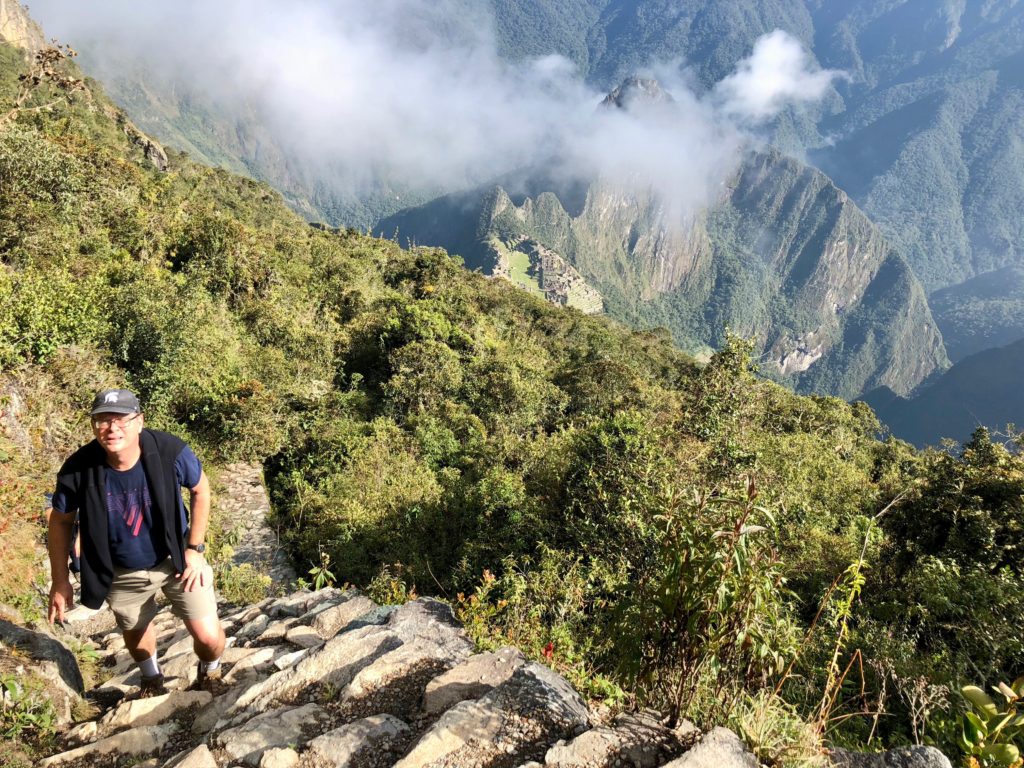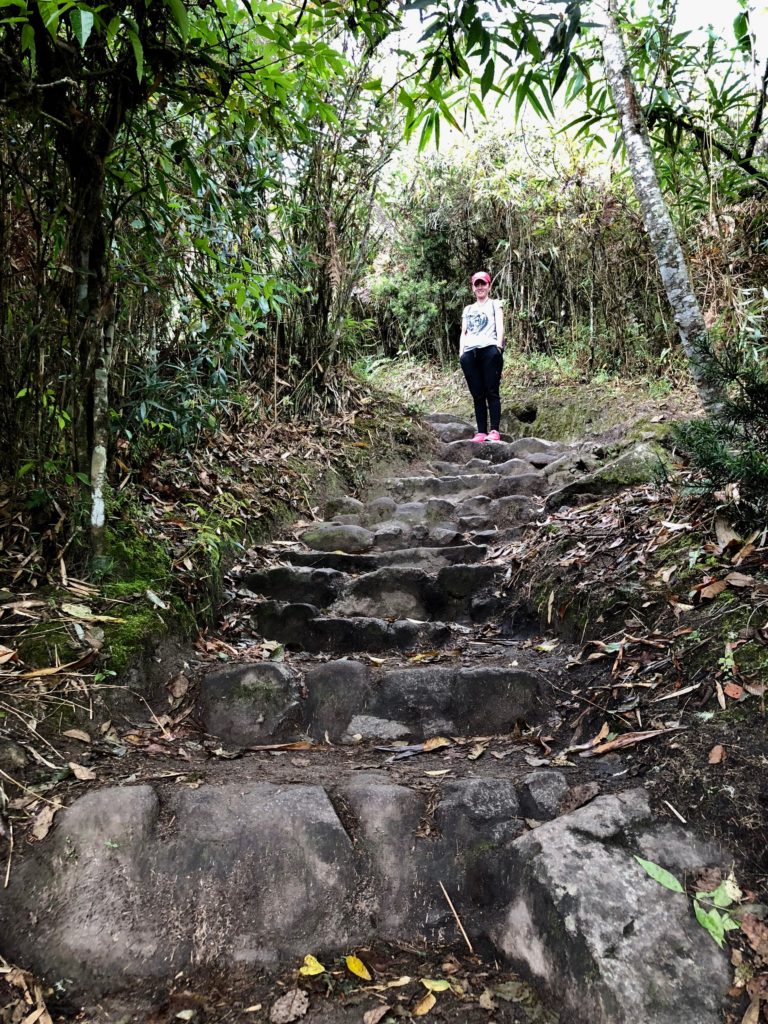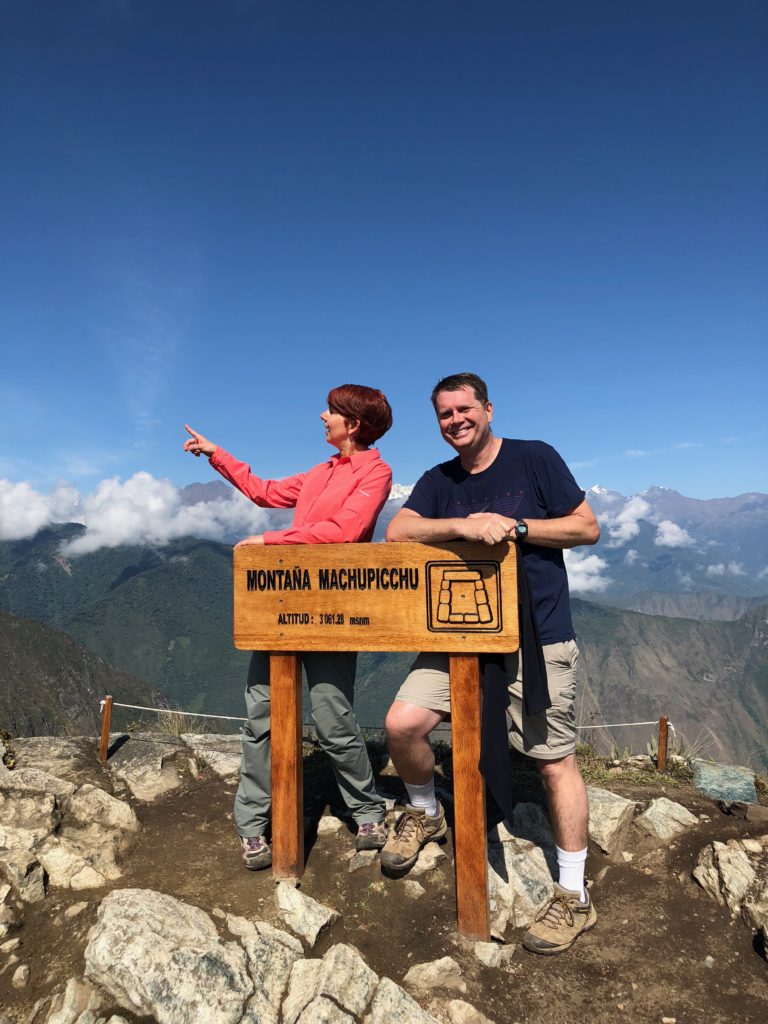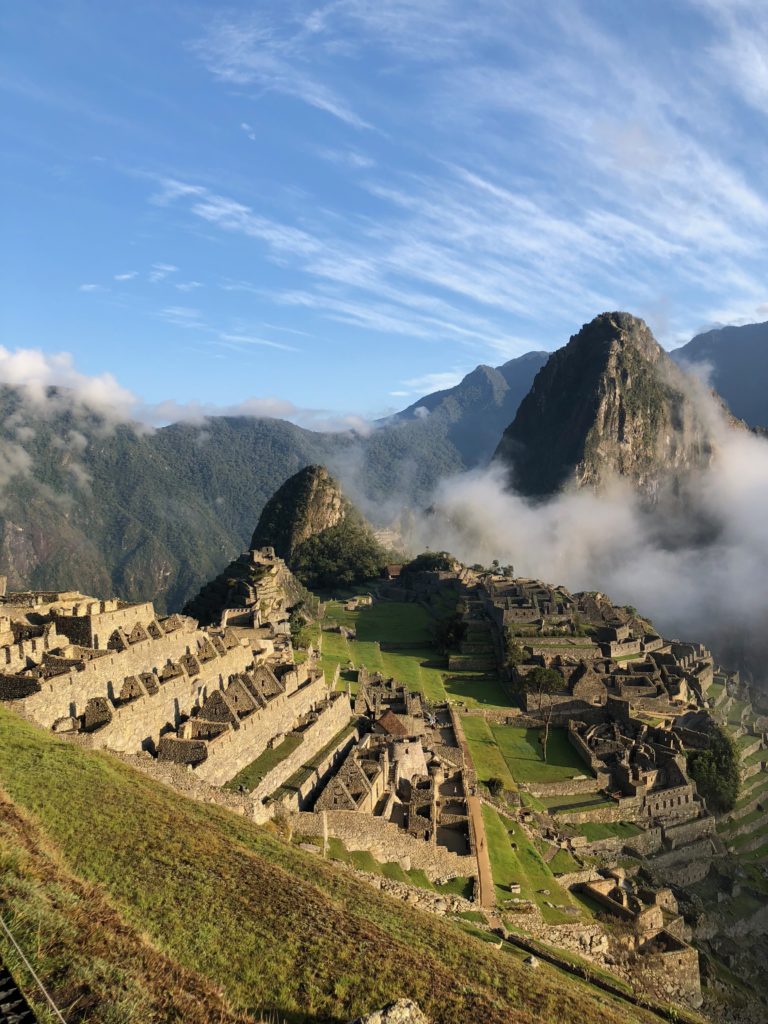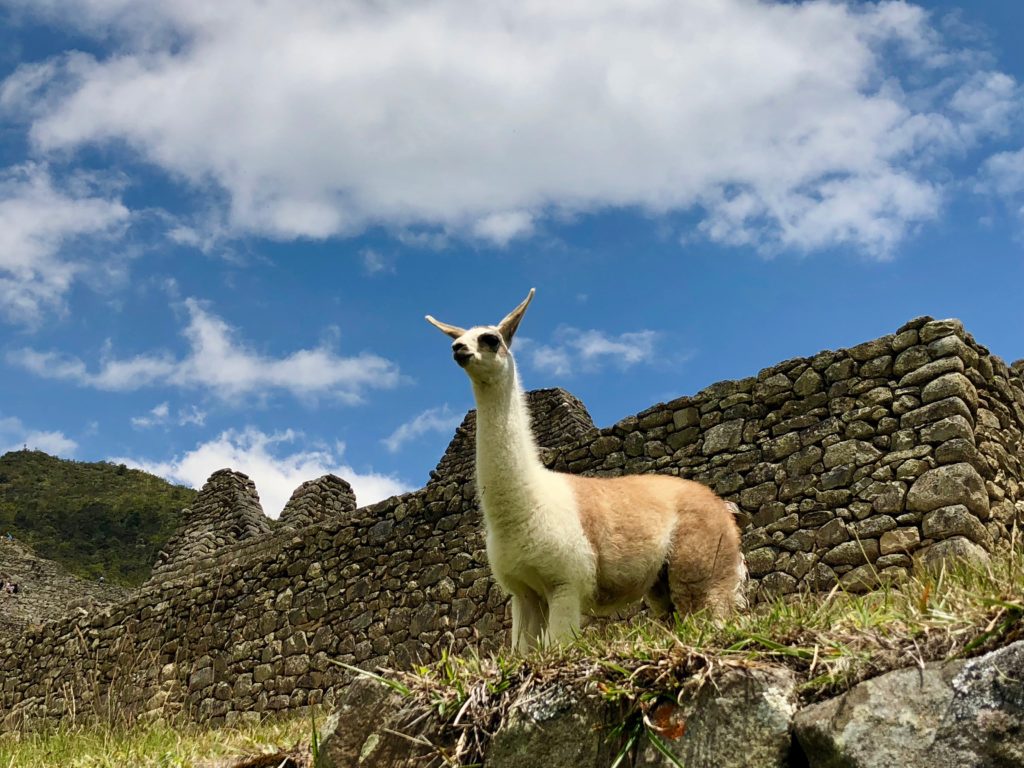The ruins of Machu Picchu cling to the hills above the Urubamba River. Two mountain peaks feature ticketed hikes for a bird’s eye view of the famous Inca citadel. We chose to climb Montaña Machu Picchu, billed as taller but easier to summit than Huaynu Picchu. Much to Stella’s chagrin, our ticket time was 7 a.m. Ian agreed to meet us at the park with his dad and the kids around 9.
Tony and I had a vision of being the first ones in the park, so we dragged Stella down, down, down to the bus stop at 5:15 a.m. only to find the line stretching back up, up, up the hill.
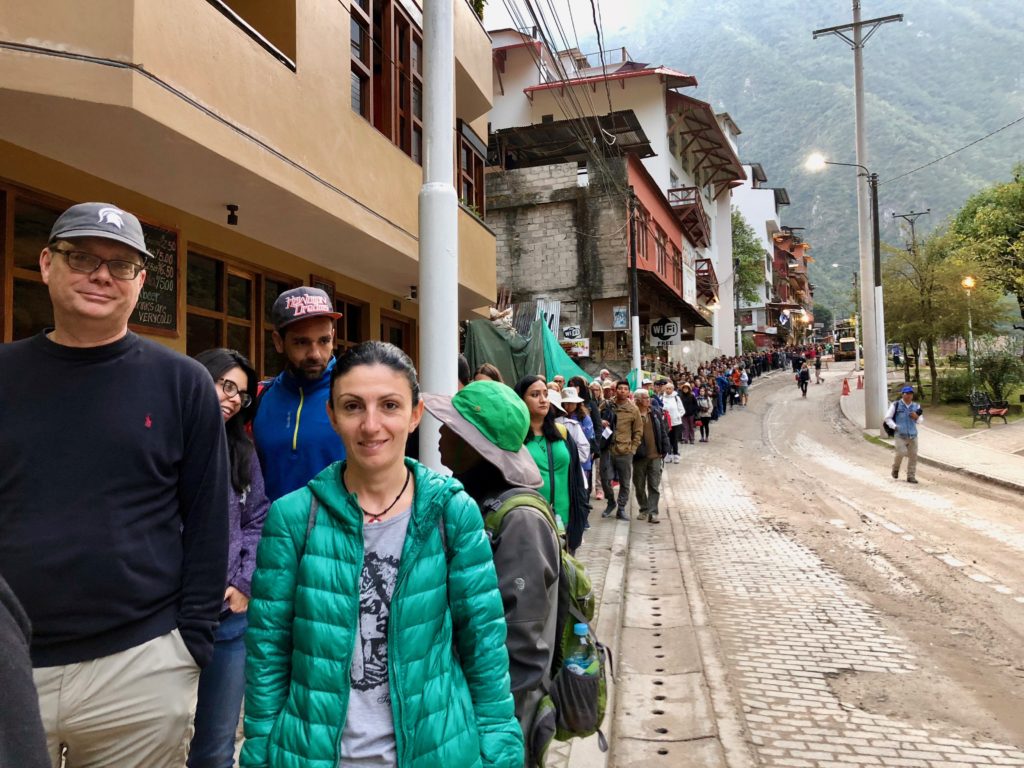
The night sky gradually gave way to dawn, dashing my hopes of a Machu Picchu sunrise photo. Buses came and went, and finally we boarded one for the 30-minute ride up the winding narrow road to the historic ruins.
I had been dreaming of a guided tour since we booked this trip. I couldn’t wait to hear the stories and ask my questions. I immediately latched on to a guide at the entrance, and she told us she had two other English speakers ready to go. Fortunately, I remembered we had tickets for the mountain hike. “You need to do that first then,” the guide said. “You need to go now!”
She was right. We followed the signs to the Montaña entrance and waited in yet another line for about 15 minutes. We got a quick glimpse of the ruins before fog rolled in, which made us a little grumpy and concerned that we wouldn’t get to see the panoramic view spotlighted on every postcard.
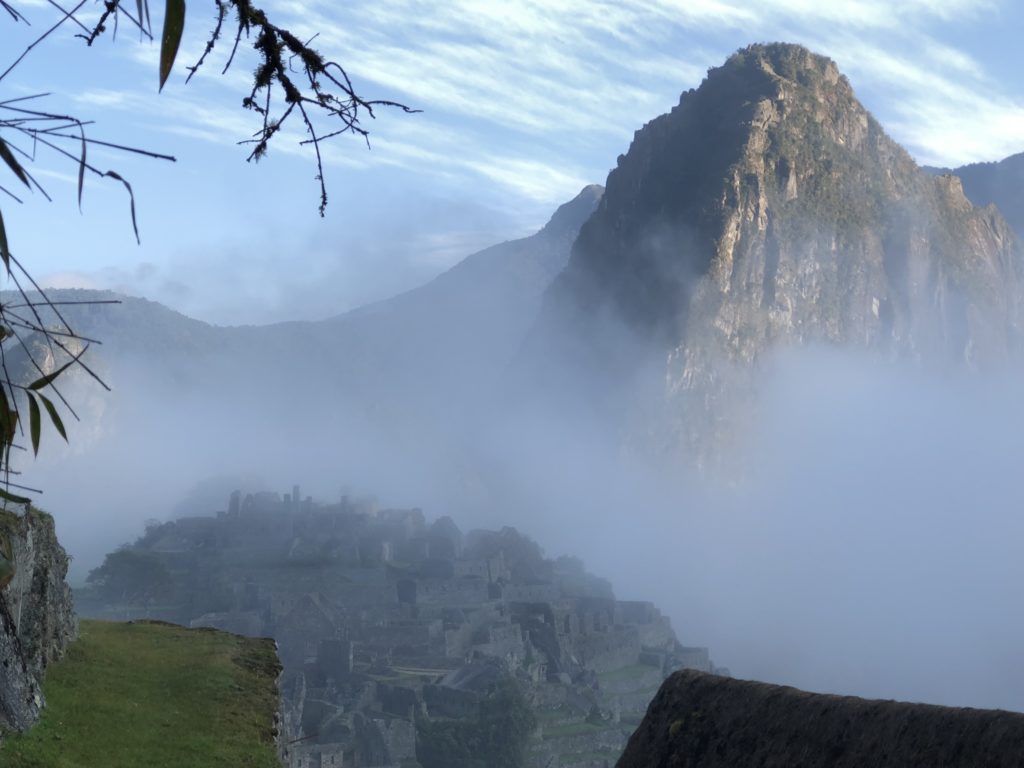
Eventually, we reached the entrance to the mountain hike, showed our passports, signed in to a huge registration ledger, and began the trek.
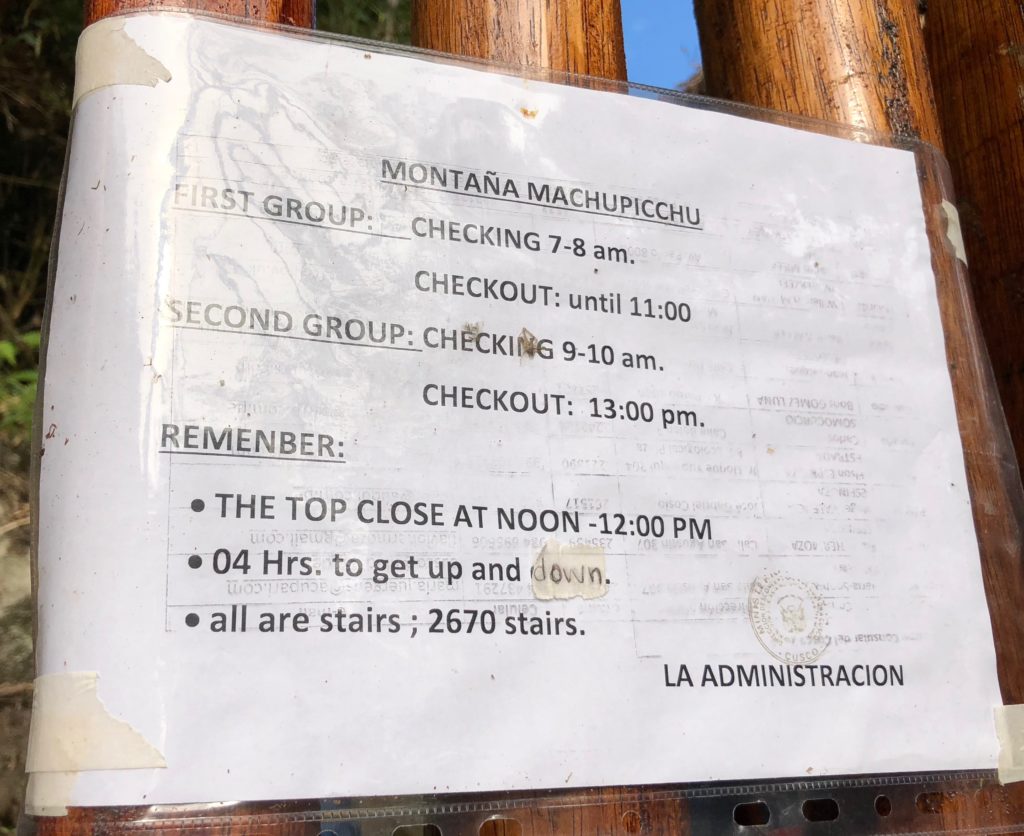
We had a little giggle at this sign. “All are stairs. 2670 stairs.” It’s like they were asking, “Are you sure you want to do this? Do you REALLY understand that ALL are STAIRS?” Tony kept repeating, “All are stairs!” as we climbed up all the freakin’ stairs. And it’s not like the Incas put much effort into building this staircase with equal-sized steps, or maybe the stones have eroded in the last 500 years. The uneven surfaces, combined with sheer drop-offs and breath-sucking altitude, created quite a challenge for three out-of-shape travelers. That said, Stella reached the top about 10 minutes ahead of Tony and me. She said she used speed skating arm movements to create momentum and got in a rhythm.
For some perspective, here are some of the steps we climbed.
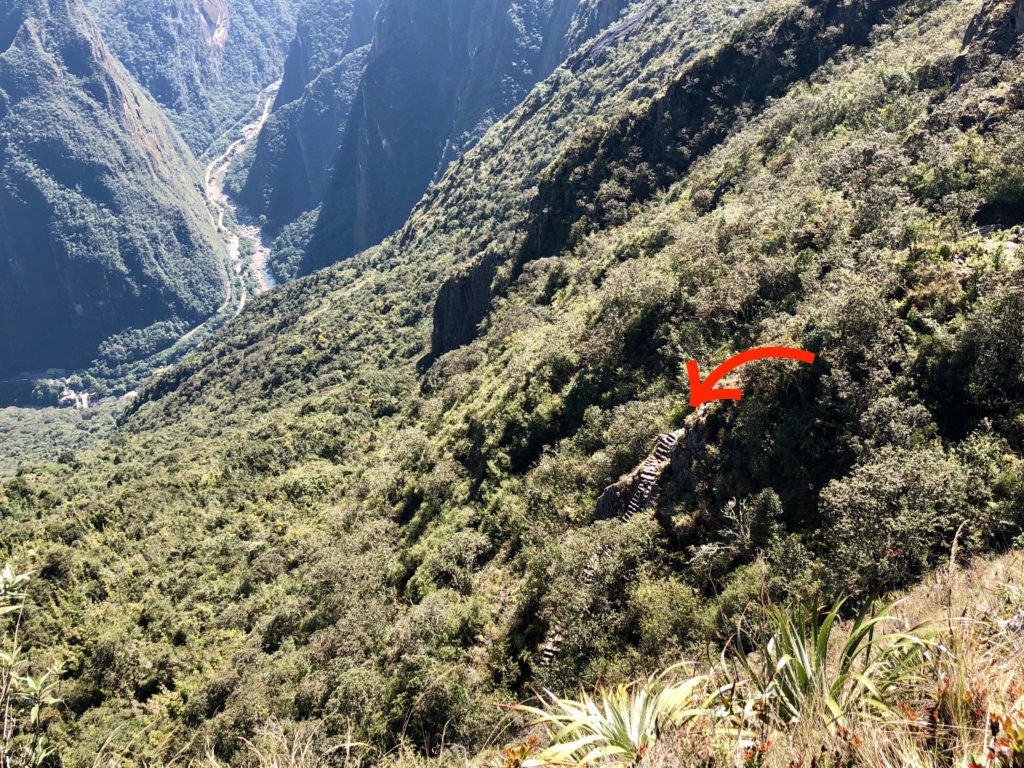
Our early start paid off. While there were other hikers on the trail, we rarely encountered each other on the trip up in the cool morning air. We were among the first 20 or so people to reach the summit after about an hour and a half on the Incan StairMaster.
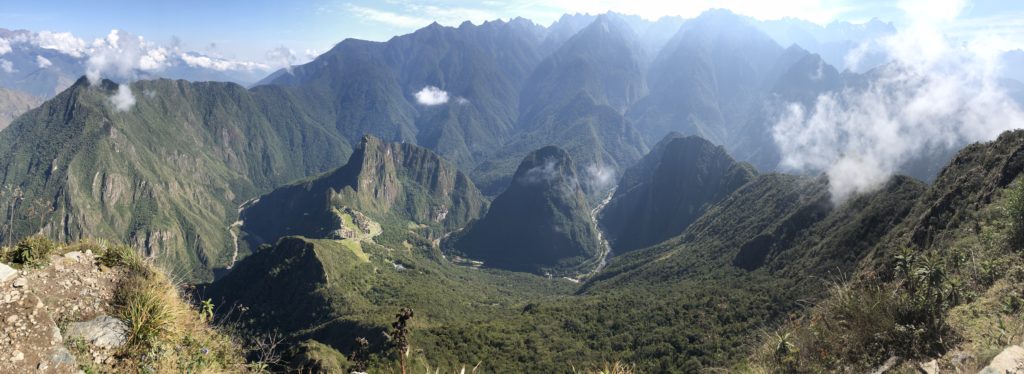
Overlooking the UNESCO World Heritage site, the Historic Sanctuary of Machu Picchu.
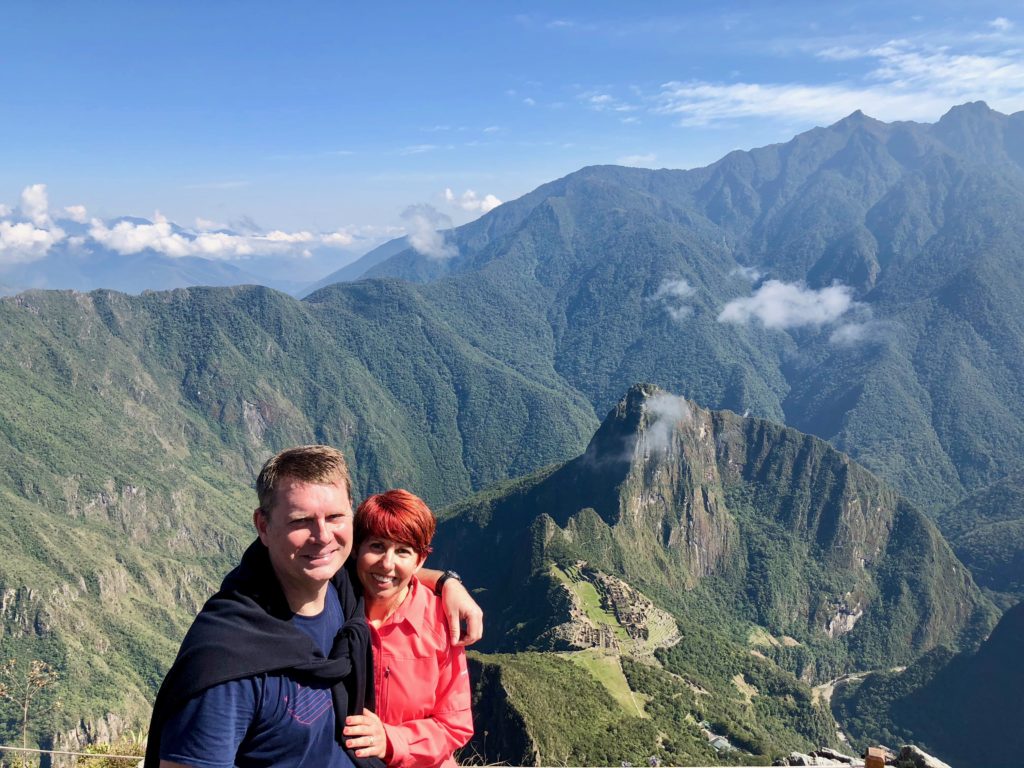
My fantasy of a zip line back down the mountain didn’t materialize. We had to hike down the way we came up, which turned out to be much, much harder on our knees and exhausted quads. At one point, Stella said, “I can only step down with my left leg! It’s like my right leg is attached to someone else.”
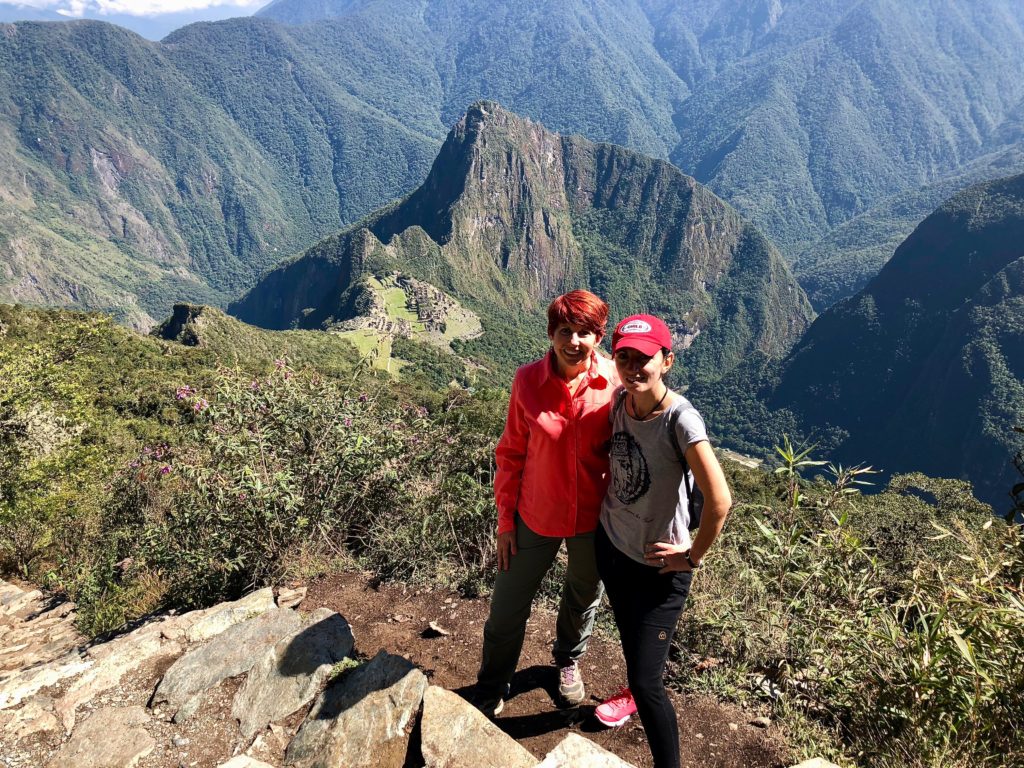
We also had to flatten ourselves against the hillside repeatedly to make space for passing climbers. Several doubled over, panting, “Is it much further?” I felt a bit sorry for them, hiking up in the blazing sunshine, but it felt good to say, “Oh yeah, you still have an hour to go!”
Our roundtrip hike took about three hours, so Stella missed her 9 a.m. meeting time with Ian. Fortunately, he had found the entrance to our mountain hike and wrote her a note in the registration ledger, which she saw while signing out. What a smart guy!
Oh, I failed to mention that every book and every blog we had read about visiting Machu Picchu warned emphatically, “You can NOT bring any food or water into the park!” So we didn’t, and we nearly died. By the time we reached the bottom of the mountain, we were dehydrated and exhausted. Visitors who climb one of the mountains are allowed to leave the park and re-enter once. That gave us the opportunity to gulp down some water at the park’s café. Craving both salt and sugar, I also slammed a Sprite and ate a bag of Doritos. (By the way, we saw scads of tourists with bottles of water inside the park. Dang it.)
After our rest, we re-entered the park, and Stella took off to find her family. By then, I knew I didn’t have the stamina for a tour. Tony and I wandered around the ruins, listening in occasionally to other people’s guides. By the time we had followed the marked paths through most of the site, the afternoon tour groups were flooding in. Seemed like a good time to get out of there.
During our travels, I read the book Turn Right at Machu Picchu: Rediscovering the Lost City One Step and a Time, by Mark Adams. Both hilarious and enlightening, the book offered fascinating glimpses into the Inca Empire and the generations of researchers who have tried to understand it. The author details his re-creation of the journey that led to Machu Picchu’s “discovery” by controversial Yale University professor Hiram Bingham in 1911. Bingham thought he had found the legendary Vilcabamba, “the lost city of the Incas,” where the last Incan rulers ultimately lost their battle with the Spanish conquistadores in 1572. (In fact, Vilcabamba is now believed to be located at the ruins of Espíritu Pampa, which was also discovered but dismissed by Bingham. American explorer Gene Savoy led the excavation of that site and found it to be much bigger than Machu Picchu.)
Want to know more? Here’s a comprehensive article about the Inca Civilization from the Ancient History Encyclopedia website.
I’ve been sitting here, typing and deleting, typing and deleting, typing and deleting as I try to describe Machu Picchu. It feels impossible to capture it … the glory of its sacred valley, the mystery of its purpose, the interconnectedness of its construction with celestial symbolism, the genius of its architecture, the whimsy of its llamas grazing on ancient terraces, the shadows cast by its holy mountains. Occasionally while walking through the site, I found myself alone. Tony would wander off during a break in the rolling waves of tourists. And I could turn in a slow circle, imagining life as it was when up to 1,000 elite Incans came here for a little luxury get-away (that’s one theory, anyway), never bothered by invading Europeans. Must have been pretty special.
How did the Incas carve these stones with no steel tools?
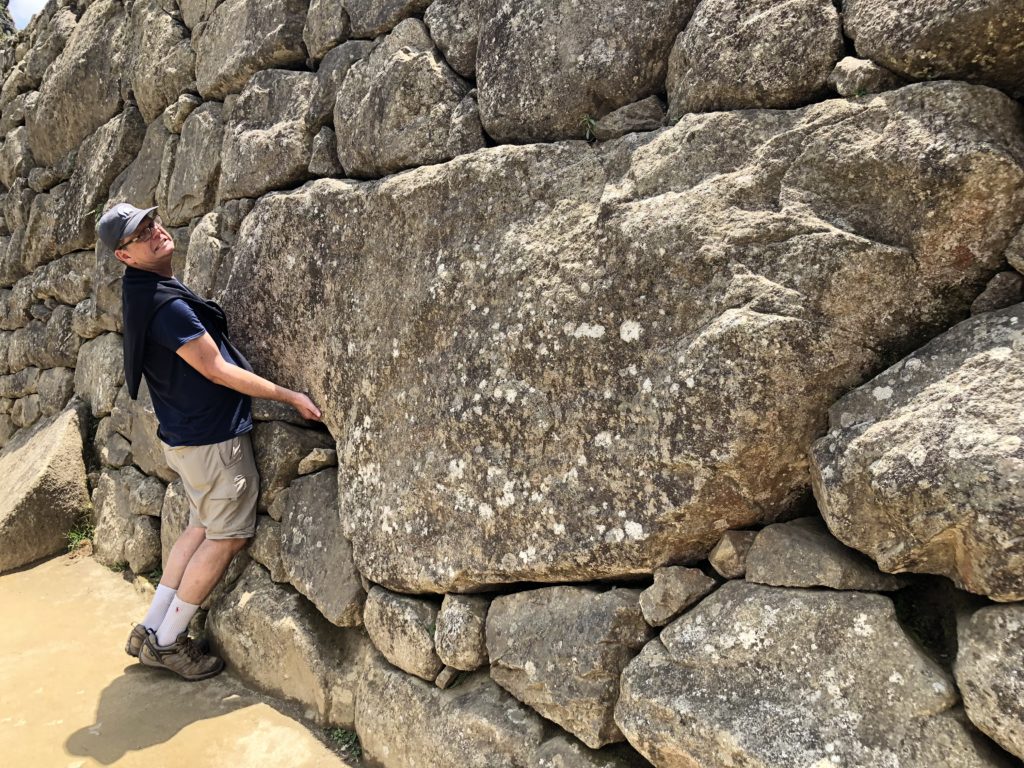
Terraces for farming withstood heavy rains and featured brilliant drainage systems.
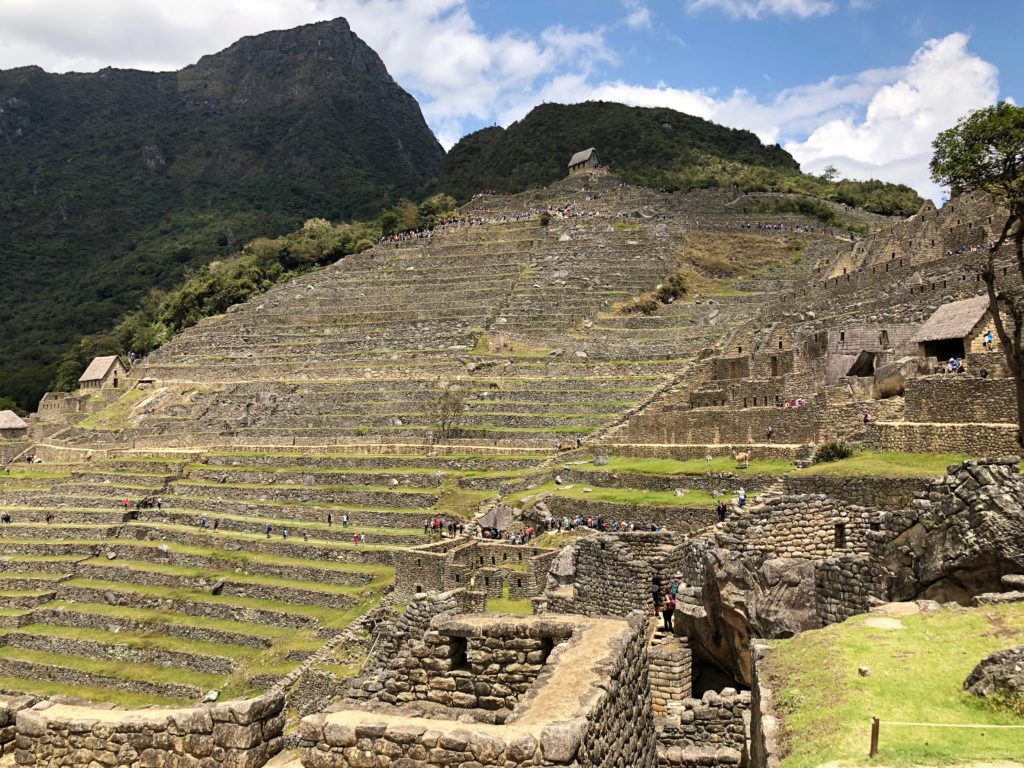
As we discovered in the rainforest of Costa Rica, Tony’s superpower is spotting wildlife. He did it again at Machu Picchu. It looked like a rabbit-squirrel hybrid, but we think it was a chinchilla.
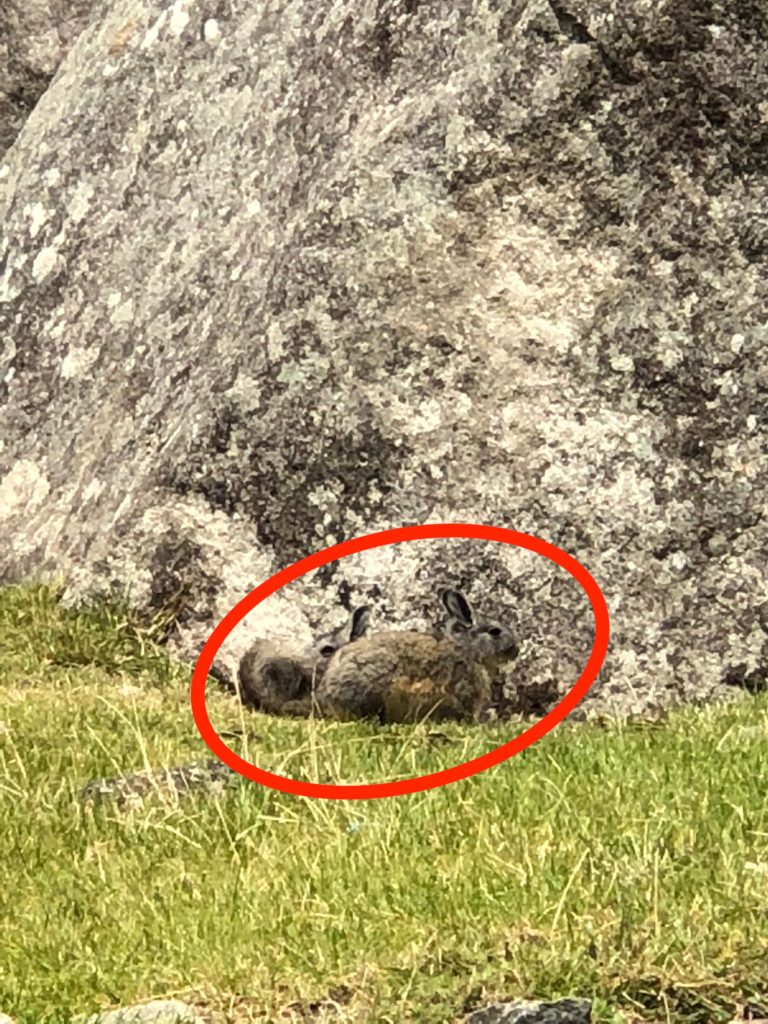
I could have sat here, staring at this all day, if only 90 million people weren’t about to stampede over me.
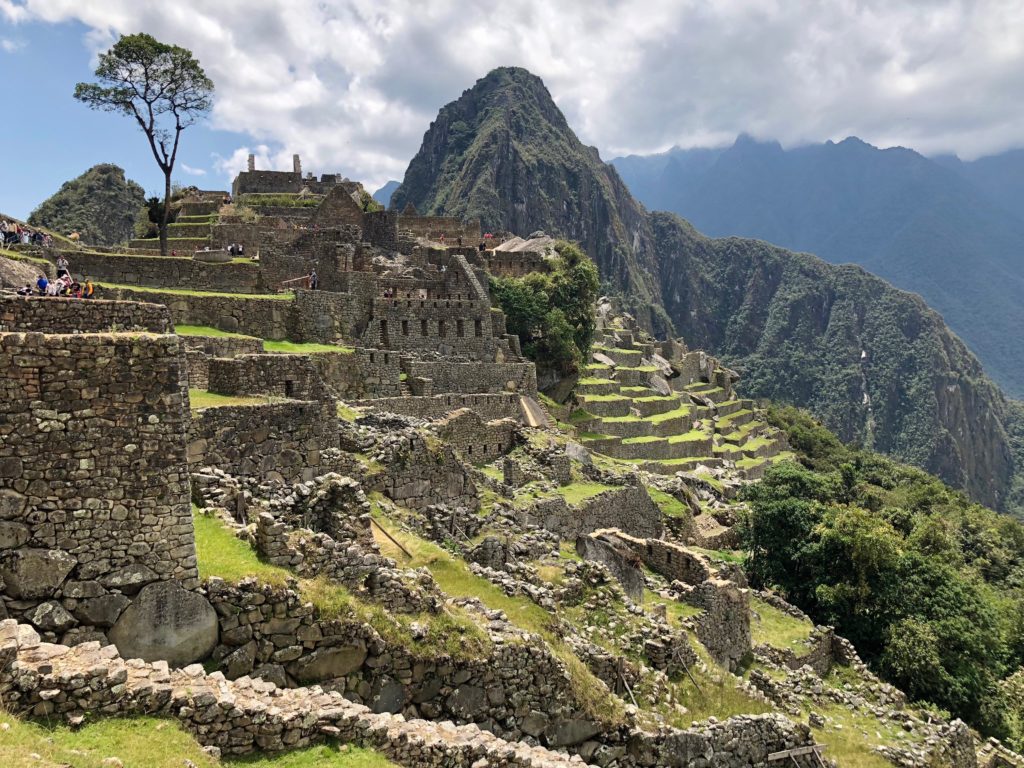
Tony appreciating our parting shot.
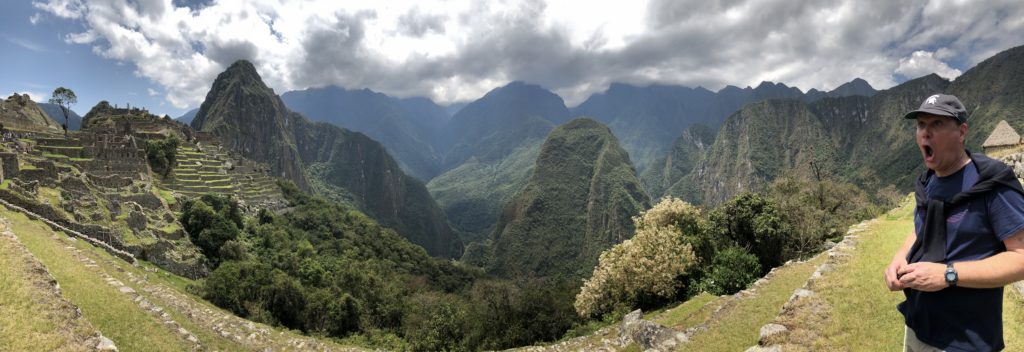
This short National Geographic video offers a nice description of Machu Picchu.

